Joanna Yap has a 3 fight winning streak going into the Grand Finals, winning her fight vs Samantha tan in the semis.
Joanna consider herself a late starter in MMA, only 2 years ago in her mid 30s she picked up BJJ at Studio23 under coach Albert Lim.. But she didn’t let age deter her. To Joanna it’s the heart that counts. Judging from her success so far, age really is just a number. She is drawned towards martial arts as it gives her an avenue to proof that with hard work and persistency one can always improve onself.
She is proud for the fact that Borneo is represented well in the MIMMA3 female category.
Meeting another fellow Borneon is unavoidable and meeting non other than Felicia is to her the best part of this tournament.
Knowing Felicia is also a prolific grapplers, Felicia also trains under A-Karadech in SS Fighter Kuching, a finalist too in this year Foreign Pride category; to improve on her striking.
This will certainly be a fight to watch as Borneon battle it out for the inaugural Female MIMMA Title
———————————————————————
Where are you from?
I’m from Kuching, Sarawak.
Growing up childhood days were you active in sports? Tell me a little about your childhood.
Growing up, I wasn’t really into sports per se, but I spent a lot of time outdoors. My memories of childhood are of climbing trees with my cousin, fishing with my childhood friends, exploring sand piles and ‘kawasan belukar’ ( bushes ) (which is rather hazardous, now that I think of it), furiously pedaling my red BMX bicycle up and down (and crashing all over) the neighbourhood, building stuff from leftover scraps I pilfered from my father’s workshop in our backyard, and sitting around watching the world go by. I’m blessed because I had the freedom to play and to enjoy being a kid. Children need that space to play, more so if their parents want them to be physically active later in life.
In college days you were into martial arts too? Which type of martial arts?
My first taste with a structured martial arts class came while I was a student at Inti College Sarawak campus. A coursemate was teaching karate, and I joined the class for a few months until I went overseas to complete my Bachelor of Commerce, majoring in Management. After I graduated, I came back home to work.
I didn’t encounter martial arts again until Studio 23 opened in Kuching. Studio 23 is owned and operated by Albert Lim (who is my BJJ coach) and Serina William (my childhood friend who I’ve known since primary school). At first I joined for the fitness classes, but later I took up a boxing/BJJ self defence class. I was interested in BJJ then but due to personal obligations, I could not commit to training so I did not join the BJJ gi classes. Then quite sometime later, coach Albert asked if I wanted to join the gi classes to be a training partner for a new student. At that time, it was possible for me to commit to training more, so I agreed and since then, I’ve been training BJJ. When the boxing/BJJ self defence programme ended, I took up muay thai at SS Fighters to keep developing my standing game.
Can you share with me a little on your family background? Siblings how many?
I’m the middle child in a family of three girls. I am the only one in the family so far who is learning martial arts. My father was a self-employed contractor while my mother is a retired teacher. Both of them worked really hard to save money so that my sisters and I could graduate from university and they raised us as best they could to lead meaningful, productive lives. My father passed away in his sleep a few years ago, so he never got to see me compete in MMA. He was a very kind-hearted, easy-going man, but in certain things, he held rather traditional views. I think I inherited my stubborness from him, which was why we disagreed on a lot of things with my mother having to play peacemaker most times. I’m unsure what he would think of his recalcitrant middle daughter fighting in a cage, but as long as I stayed safe and took care of myself, I think he would have been ok with it, eventually.
Being a typical Chinese father, he didn’t share much about his feelings with his children. I didn’t know how proud he was of his family until his funeral when one of his oldest good friends told us that my father was so proud of his three children and couldn’t stop talking about us whenever he was with his friends. I used to play percussions in my secondary school marching band and my father didn’t like it that I spent so much time at practice in school. But he changed his mind when he finally attended one of our school band’s concerts and saw what it was we actually did and what we were practicing so hard for. I think his reaction would have been the same for MMA.
As for my mother, I was purposely kinda vague when explaining to her about what I was planning to do. She also didn’t want to know too much, I think, heh heh. She’s had lots of time to get used to the idea of me in the cage, since I tried out for MIMMA 2 last year when they didn’t have an official women’s category. I think she was initially a bit concerned when we started the MIMMA 3 ladder matches but as I kept returning home with all my teeth intact and more or less in one piece, she’s become more at ease. At least she can smile now when she drops me off at the airport when I’m on my way to KL to fight! She’s also watched some of my fights online on the MIMMA website (www.malaysianinvasion.com).
What makes you choose BJJ over many other martial arts?
Me taking up and sticking with BJJ had a lot to do with having access to train regularly with people who are passionate about the martial art. The atmosphere in class is very positive and very supportive because the coach and training partners are all looking out for you and also for each other. The emphasis is on helping each other to learn and improve, not to show off for the sake of ego. Everyone has the room to grow at their own pace. We train with increasing levels of intensity so people learn how to apply good technique with progressive levels of pressure, which is really important in a self-defence situation.
I feel that BJJ as a martial art for self defense is also very practical, especially for smaller sized men and women. The focus is on how to use what you have efficiently and effectively to control the other person without hurting them or putting yourself in harm’s way. But perhaps the thing I enjoy most about it is that there’s always something new to learn. For every move, there’s a counter, then there’s a counter to that counter, and a counter to that counter to that counter. Everything is evolving. Trying to solve the puzzle can be very addictive, and that’s what we’re trying to do every time we get on the mats.
Even though I may have more experience in BJJ, I am drawn to learning more about other martial arts too like MuayThai. The only question is whether I’d have enough time to learn them all! Every martial art has its beauty and advantages. That’s one reason why MMA is so attractive because it allows each martial art to show what it can do outside of their traditional competitive settings.
You learn BJJ at Studio23 & MT at SS Fighter right? In a fight do you like to keep it standing or you prefer the ground game?
I strive to be both comfortable on my feet as well as on the ground. In sports MMA as well as in a self-defence situation, it is not practical to only concentrate on either ground or standing. You need both, and that’s what I aim for in training.
What is your fight record in MMA? Have u competed in MT before?
MIMMA is actually my first MMA experience, so the three fights I’ve had in the competition so far is basically my whole MMA record. In Muay Thai, my record is one amateur fight which I won.
What makes you decided to enter MIMMA?
Trying out for MIMMA seemed like a natural progression in order for me to improve myself as a martial arts practitioner. Last year, I joined the audition for MIMMA 2 even though there wasn’t a women’s category then as I wanted to see how I would do in an MMA setting. I am really happy that for MIMMA 3, a women’s category was added, and that I managed to get into the final 16.
After MIMMA, any regional events you will be participating in?
I’ve had to postpone competition plans in order to concentrate on MIMMA, so after MIMMA, I’m looking forward to joining my teammates again when they go compete. There’s been a boom in Malaysian and Singaporean BJJ competitions recently, so it would be nice if I could join in at least one before the end of this year. The biggest regional BJJ competition I’m eyeing is the Pan Asians in Manila next year which is usually held around May. As for MuayThai, the Sarawak MuayThai Association is very active and there’s usually a competition every few months, so I will be eyeing taking part in those as well.
You in your mid 30s, do u see age as a challenge in MMA? Does it affect you in terms of recovery after hard training or getting injury? How long do you think you will keep competing?
I joke a lot about my age, that I’m celebrating the 11th anniversary of my 25th birthday (I’m 36) this year – but for the most part, I tend to forget about my age when I’m training and focus on learning to be a better fighter today than I was yesterday. To a certain extent, success in combat sports tends to favour the young, but what is actually more important is conditioning, discipline and training. A young brawler will get punished by a more disciplined and better conditioned martial artist twice his/her age any day.
Of course when people get older, their bodies and ability to recover will change, but that’s part and parcel of developing as a martial artist. You have to adapt your game to what your body is capable of. You have to be smart about how you train, how you eat and how you recover.
I will keep competing as long as I can because I believe in competition as a way to improve and also because martial arts is a part of my life. I think I have been blessed with good genetics and also a touch of luck that I am able to keep pushing as hard as I do physically for as long as I have, and stay relatively injury free. I also have my coaches and training partners to thank for this because they look out for me, and I look out for them. It sucks being injured because you can’t train, so it’s in everyone’s best interest to make sure we all stay injury free. In all the time I’ve trained so far, I’ve only had one serious injury happen to me when I hurt my neck during training last year, and that was because it was a freak accident. When injuries happen, you have to be disciplined to rest and follow the doctor’s instructions so that you can get back to training as soon as possible.
What is your training regimen like? How many times you train per week normally? Preparing for final – do you up the notch for training?
I train about 5-6 days a week with at least one day focused on recovery. Training is a mixture of cardio, strength and conditioning, technique and sparring. The closer it gets to a fight, the more time we spend focusing on the specifics of our game plan. If need be, the intensity gets tweaked, but usually we don’t change things too much.
When stepping in the cage, are you a technical person that follows strictly to your game plan? or you prefer to go with flow and react, adapt and improvise as u go along?
You can’t always predict what will happen when you step into the cage, so having a game plan is definitely important. A good strategy will provide overall focus but also prepares the fighter for likely scenarios against that particular opponent. During the fight, I listen for and do what my corner tells me to do because they can see things that I may not realise during the course of the fight.
Felicia has won all her fight by submission…do you see yourself outdoing her on the ground?
I guess the only way to find out is if the fight gets to the ground.
How was it training at TMT? Tell me the experience.
TMT has a deep bench of experienced instructors, full-time fighters and active competitors so it was great to be able to learn and train with them. For the MIMMA finalists, most of us have full-time jobs or are still studying and for many of us, this was our first time experiencing full-time training. It was a good opportunity to experience how a fight camp is like, how pro-fighters eat, train and recover.
Training alongside Felicia whom you will fight, how does that feel? Do you bond with each other or you will keep the distance.?
I did expect that it might get a bit awkward training at the same fight camp as Felicia since it is very rare for two opponents to be training side by side. However, we enjoyed a good rapport and I think that’s because of our mutual respect for each other as well as our common interest in BJJ.
What is your opinion on MIMMA and the women category this year?
MIMMA and Tunetalk have done so much to support the growth of combat sports in the region, and I feel fortunate to be given the opportunity to be a part of the growing Malaysian MMA scene on such a prominent platform. Without their support, I don’t think Malaysian MMA and combat sports in general would have grown as quickly and as much as it has in these past few years.
I really enjoyed the MIMMA women’s fights this year as I got to watch and meet so many talented and passionate female fighters. Some of them have been training for years while others only picked up martial arts recently, but all of them have that fire and desire to fight, which is so inspiring, whether in male or female MMA fighters.
It just reinforces my personal belief that there is a lot of potential in Malaysian women’s MMA. Even during the auditions, there was a nice mix of fighters coming from specific martial arts as well as those who started with MMA as their base style from the very beginning of their training. It’s always fun to see how different styles match up in the cage, like what happens when you put one specialist with another, or match a generalist with a specialist.
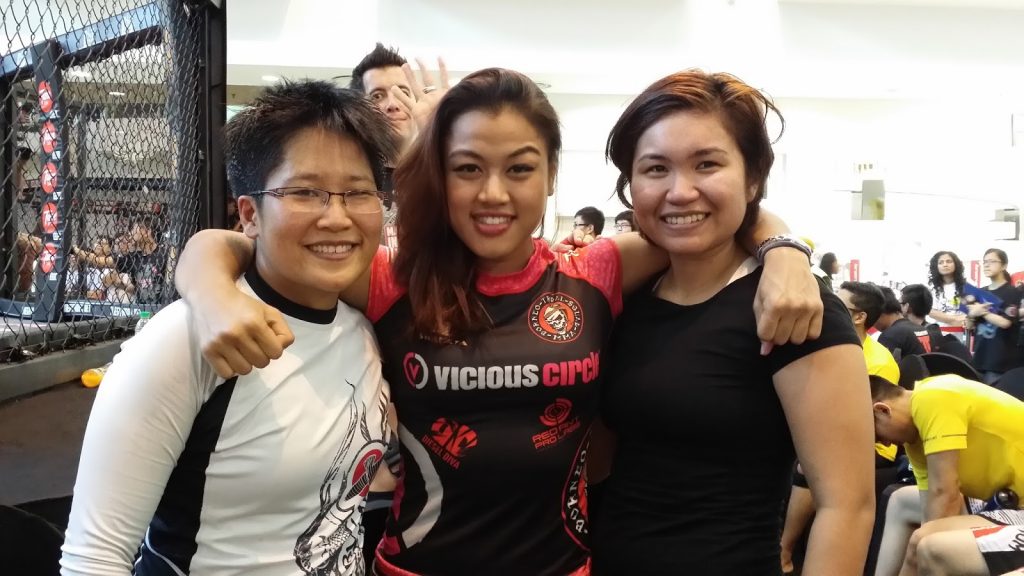 |
| with Malaysian 1st Female Pro MMA fighter Ann Osman ( center ) |
What motivates you to fight? Who do u look up to? Any Idol that u look up to?
The desire to improve is what motivates me to fight. What happens in training and in the cage is a reflection of life itself – for example,
I don’t have an idol per se, but I am always inspired by those who have to overcome obstacles to get where they are and to become good at what they desire to excel in. This characteristic of perseverance and toughness you will find in almost every fighter/martial arts practitioner you meet or read up about online.
How does working as a journalist affect training? Does your employer support your endeavor in MMA?
It’s always a challenge to balance work and training no matter what line you’re in but there are certain unique characteristics in terms of how my job affects my training. Probably the biggest factor is that there are no fixed office hours for reporters and you work when there is a need to work regardless of whether it’s the weekend or public holidays, etc. I’ve had to miss out on training because I was trying to meet a deadline or because I had to travel outstation for work.
What do you think of MMA / martial arts scene in Borneo?
Overall, I think the MMA/martial arts scene in Borneo is positive. Sarawak has always had state-supported development programmes for SUKMA sports like taekwondo, judo, wushu and silat. Muay thai has been growing very quickly as well, despite being a relatively latecomer to the mix.
I think Sabah is growing at a faster rate than Sarawak in non-recognised SUKMA martial arts like BJJ and MMA as they have established their own associations which are also supported by the state’s youth and sports agencies.
Do you see that in Borneo you can get good quality training partner to prepare you for fights?
The quality is definitely there, but the opportunities for that quality to develop must also be made to happen. I’m blessed that in Kuching, I get to learn from some of the best martial arts instructors in Borneo, if not Asia. Coach Albert Lim at Studio 23 is a BJJ brown belt under Prof Adam Shahir Kayoom who is a black belt under American Top Team’s Master Ricardo Liborio.
My training partners at Studio 23 and SS Fighters are relatively few compared to bigger gyms, but what they may not have in quantity, they more than make up for in quality. One of my regular training partners at Studio 23 is Nicholas Jeffrey who was a contender finalist in MIMMA 2 during his first try in the competition and made it all the way to the contender semifinals in MIMMA 3. Another one is Justin Lo, who tried out for MIMMA for the first time this year and made it all the way to the semifinals but couldn’t proceed to the contender finals because he had to pull out due to injury.
I get my ass handed to me on a regular basis by all my training partners, the majority of whom are males. Sometimes I do wish I had more female training partners my size just to see how I compare, but really, at the end of the day, there’s only trained or untrained, regardless of whether you’re male or female, atomweight or heavyweight. I get to train with the best in Borneo – I have nothing to complain about.
How do you unwind if not training? What type of songs you listen to when training? Favourite hangout place? Favourite food?
When I’m not training, I unwind by moving as little as possible i.e. sleeping, reading, chilling on the couch with my cats. I also spend a lot of my downtime thinking about training. It’s a paradox, but really, that’s usually the only time that I have to go over about what I need to improve, techniques and strategies I would like to try in the next training, etc.


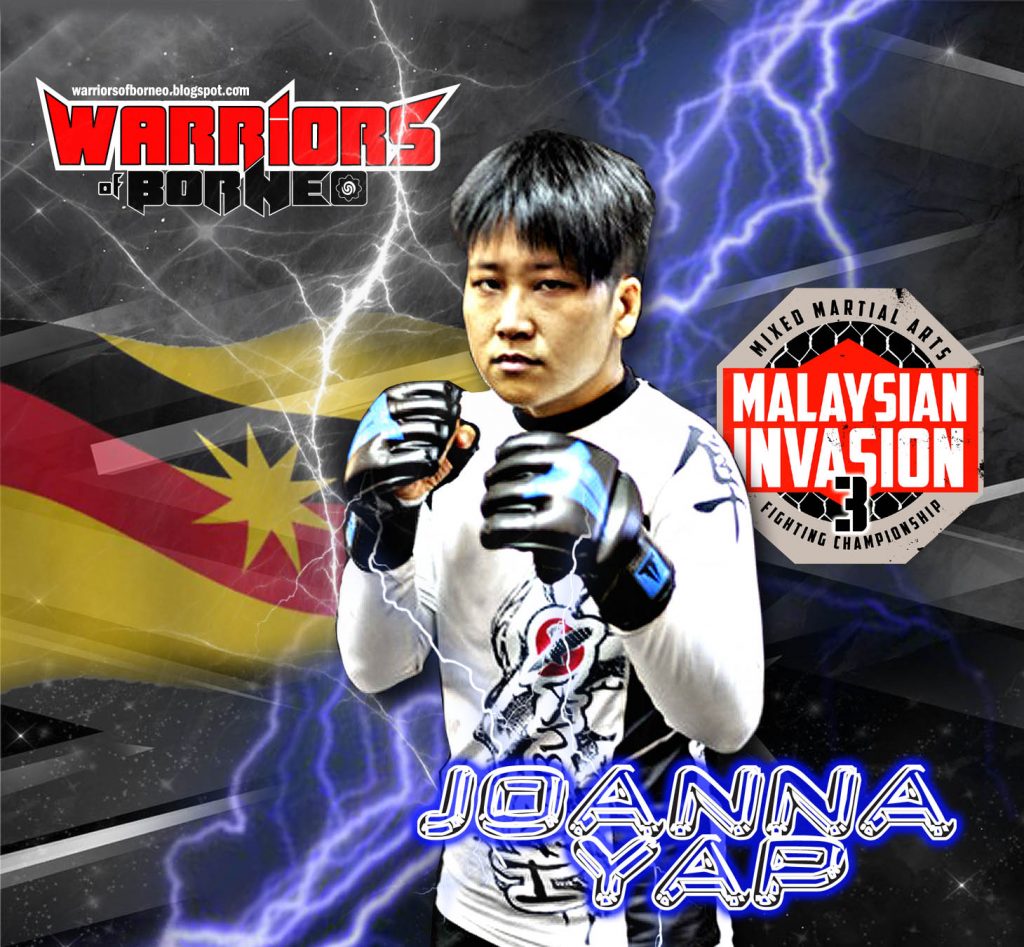
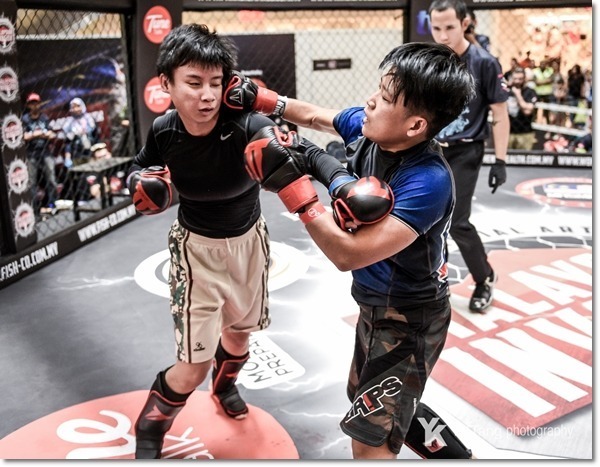
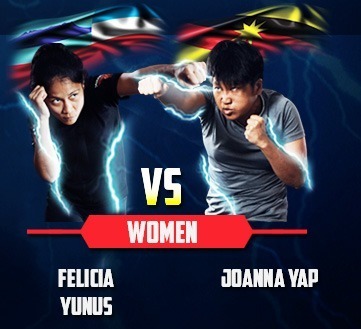






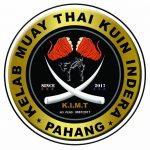





Be the first to write a comment.